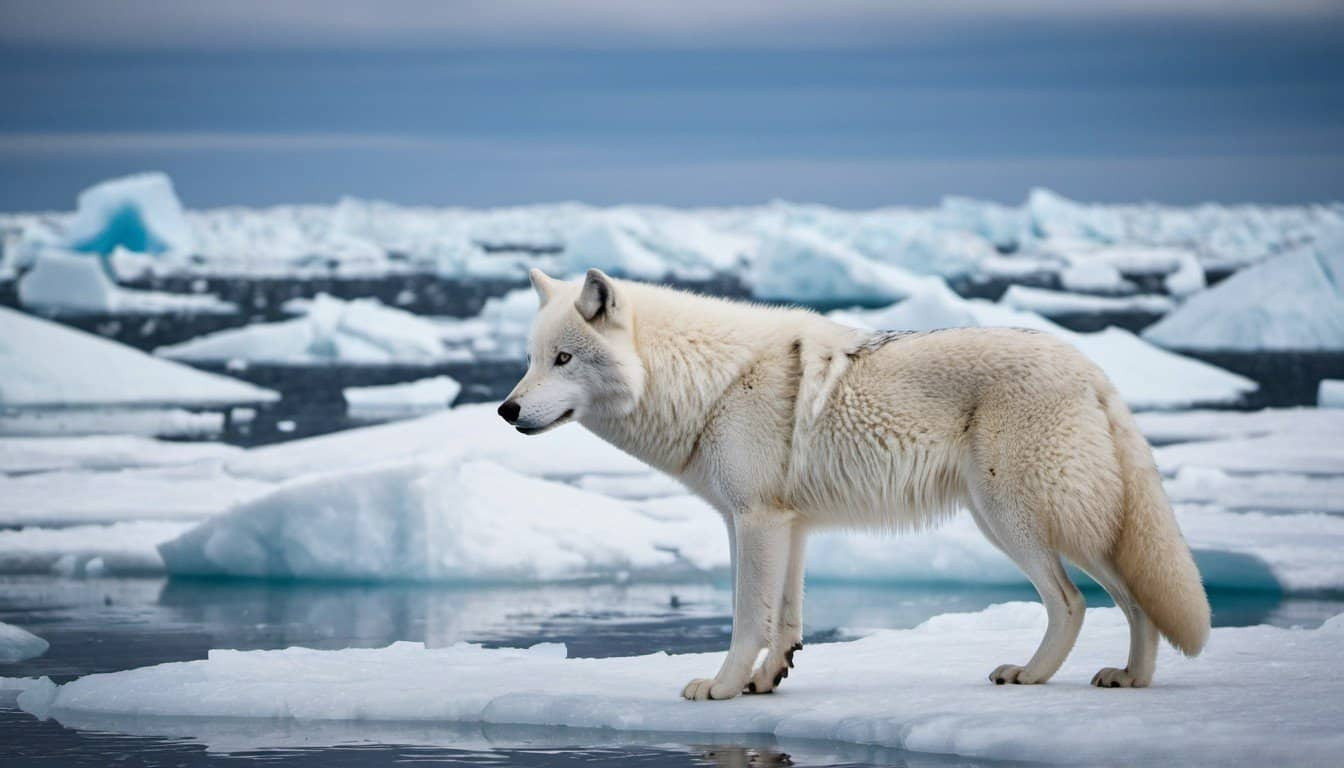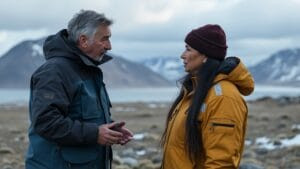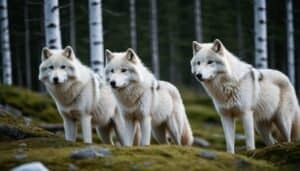Introduction
Government-NGO partnerships play a crucial role in Arctic wolf conservation, combining resources, expertise, and efforts to protect this iconic species
This article explores the importance of these collaborations, the roles and contributions of each party, successful examples of partnerships, and the challenges they face. By understanding these dynamics, we can appreciate the comprehensive efforts being made to ensure the survival of Arctic wolves
Overview of Government-NGO Partnerships in Arctic Wolf Conservation
Government-NGO partnerships are vital for the effective conservation of Arctic wolves. These collaborations leverage the strengths of both sectors, combining governmental authority and resources with the grassroots knowledge and flexibility of NGOs
Together, they work towards preserving Arctic wolf populations and their habitats
Importance of Collaboration for Arctic Wolf Conservation
The conservation of Arctic wolves requires a multifaceted approach, as these animals face numerous threats, including habitat loss, climate change, and human-wildlife conflict. Governments have the legislative power and resources to implement large-scale conservation initiatives, but often lack the localized knowledge and on-the-ground presence that NGOs possess
NGOs, on the other hand, excel in community engagement, field research, and raising public awareness. When these two entities collaborate, they create a synergistic effect that enhances the overall effectiveness of conservation efforts
Collaboration is essential because it allows for the sharing of resources, expertise, and data. Governments can provide funding, policy support, and scientific research, while NGOs can offer detailed field data, innovative conservation techniques, and strong advocacy campaigns. This joint effort ensures that conservation strategies are comprehensive and can address the multifarious challenges Arctic wolves face
Key Stakeholders Involved in These Partnerships
Several key stakeholders are involved in government-NGO partnerships for Arctic wolf conservation. These include:
Government Agencies: National and regional wildlife agencies, such as Environment and Climate Change Canada (ECCC) and the US Fish and Wildlife Service (USFWS), play crucial roles. They are responsible for policy-making, enforcement of wildlife protection laws, and allocation of public funds for conservation projects
Non-Governmental Organizations (NGOs): Leading conservation NGOs like the World Wildlife Fund (WWF), Defenders of Wildlife, and the Wildlife Conservation Society (WCS) are heavily involved. These organizations bring in specialized knowledge, conduct field research, and mobilize public support for conservation initiatives
Local Communities: Indigenous peoples and local communities living in Arctic regions are crucial partners. They often have deep ecological knowledge and a vested interest in the sustainable management of local wildlife resources. Engaging these communities ensures that conservation efforts are culturally appropriate and locally supported
Academic and Research Institutions: Universities and research institutions contribute valuable scientific research and data analysis. Their involvement helps in understanding the ecological needs of Arctic wolves and in monitoring the effectiveness of conservation strategies
International Bodies: Organizations like the Arctic Council and the International Union for Conservation of Nature (IUCN) provide platforms for international cooperation and policy development. They help harmonize conservation efforts across different countries within the Arctic region
By involving these diverse stakeholders, government-NGO partnerships can tackle the complex challenges of Arctic wolf conservation more effectively, ensuring that efforts are well-coordinated and impactful
Roles and Contributions of Governments and NGOs
In the conservation of Arctic wolves, both governments and NGOs play distinct yet complementary roles
Governments bring policy-making authority and resources, while NGOs contribute field expertise and public engagement efforts. This section delves into how each entity contributes to the overarching goal of preserving Arctic wolves
Governments’ Roles: Policy, Funding, and Research
Policy Making and Legislation
Governments are responsible for creating and enforcing wildlife protection laws that directly impact Arctic wolf conservation. Policies such as protected area designations, hunting regulations, and habitat preservation are crucial
For example, the Canadian government has established several protected areas within the Arctic region to safeguard critical habitats for Arctic wolves and other wildlife. Additionally, international agreements like the Convention on Biological Diversity guide national policies and ensure global cooperation
Funding and Resource Allocation
Governments provide significant funding and resources necessary for large-scale conservation projects. This funding supports various initiatives, including habitat restoration, anti-poaching measures, and research programs
For instance, the US government, through the US Fish and Wildlife Service, allocates grants and financial support to conservation projects aimed at protecting Arctic wolves. These funds are often distributed to partner NGOs and research institutions to maximize impact
Research and Monitoring Programs
Government agencies conduct and support extensive research and monitoring programs to understand Arctic wolf populations better. This includes population surveys, genetic studies, and tracking movements through GPS collars
Such data is vital for informed decision-making and developing effective conservation strategies. Environment and Climate Change Canada, for example, collaborates with universities and NGOs to monitor Arctic wolf populations and assess the health of their ecosystems
NGOs’ Contributions: Fieldwork, Advocacy, and Education
Fieldwork and Data Collection
NGOs are heavily involved in on-the-ground conservation activities. They conduct field research, collect data on Arctic wolf behavior, and monitor their habitats
This grassroots presence allows NGOs to gather detailed and timely information, which is essential for adaptive management practices. The World Wildlife Fund (WWF), for instance, conducts extensive field studies to track Arctic wolves’ movements and understand their interactions with prey species
Public Awareness and Education Campaigns
Raising public awareness about the plight of Arctic wolves is a critical aspect of NGOs’ work. They run education campaigns to inform the public and policymakers about the importance of conserving Arctic wolves and their habitats
These campaigns often include community outreach, educational materials, and media engagement to build broad support for conservation efforts. Defenders of Wildlife, for example, engages in extensive public education efforts to highlight the ecological significance of Arctic wolves
Advocacy and Policy Influence
NGOs play a pivotal role in advocating for stronger wildlife protection policies and influencing government decisions. They lobby for legislative changes, provide expert testimony, and participate in policy-making processes
Through these efforts, NGOs ensure that the conservation needs of Arctic wolves are represented in governmental agendas. The Wildlife Conservation Society (WCS) is known for its effective advocacy work, pushing for policies that promote the conservation of Arctic ecosystems and their inhabitants
By combining the policy-making power and resources of governments with the field expertise and advocacy efforts of NGOs, these partnerships create a robust framework for Arctic wolf conservation. Each entity brings unique strengths that, when combined, significantly enhance the effectiveness and reach of conservation initiatives
Successful Examples and Outcomes of Partnerships
Government-NGO partnerships have led to several successful conservation efforts for Arctic wolves. These collaborations showcase the benefits of pooling resources and expertise to achieve common goals
This section highlights notable examples and the positive outcomes resulting from these partnerships
Case Study: The Canadian Government and WWF
One of the most successful partnerships is between the Canadian government and the World Wildlife Fund (WWF). This collaboration focuses on the protection and monitoring of Arctic wolf populations across Canada’s northern territories
The Canadian government provides funding and policy support, while WWF offers field expertise and community engagement
Key Initiatives and Achievements:
Habitat Protection: Together, they have established large protected areas, ensuring that critical habitats for Arctic wolves are preserved. This includes significant parts of the Arctic tundra and boreal forest, which are essential for the wolves’ survival
Community Involvement: The partnership actively involves local Indigenous communities, incorporating traditional ecological knowledge into conservation strategies. This approach has not only improved the effectiveness of conservation efforts but also empowered local communities to take an active role in wildlife protection
Research and Monitoring: Extensive field research and monitoring programs have been set up to track Arctic wolf populations and understand their behavior. The data collected helps in making informed decisions and adapting conservation strategies as needed
Case Study: US Fish and Wildlife Service and Defenders of Wildlife
In the United States, the US Fish and Wildlife Service (USFWS) has partnered with Defenders of Wildlife to enhance conservation efforts for Arctic wolves, particularly in Alaska. This collaboration emphasizes research, public awareness, and policy advocacy
Key Initiatives and Achievements:
Research and Data Collection: The partnership has launched several research projects to study the ecology and behavior of Arctic wolves. GPS tracking and remote sensing are used to gather data on wolf movements and their interactions with other species
Public Awareness Campaigns: Defenders of Wildlife leads robust public education campaigns to raise awareness about the importance of Arctic wolf conservation. These campaigns have been successful in garnering public support and influencing policy changes
Policy Advocacy: Through joint advocacy efforts, the partnership has influenced state and federal policies to include stronger protections for Arctic wolves and their habitats. This includes lobbying for the designation of new protected areas and stricter regulations on industrial activities that threaten wolf habitats
Key Outcomes from These Partnerships
The collaborative efforts between governments and NGOs have led to several notable outcomes:
Increased Protected Areas: Establishing and expanding protected areas has been a significant achievement. These areas provide safe habitats for Arctic wolves and other wildlife, ensuring their long-term survival
Enhanced Research and Data: The partnerships have resulted in extensive research and valuable data on Arctic wolves. This information is crucial for developing effective conservation strategies and tracking the progress of ongoing efforts
Community Engagement: Involving local communities has strengthened conservation initiatives, making them more sustainable and culturally appropriate. This engagement ensures that conservation efforts are supported and maintained at the grassroots level
Policy and Legislative Changes: Advocacy efforts have led to stronger wildlife protection policies and regulations. These changes help mitigate threats to Arctic wolves, such as habitat destruction and climate change impacts
Increased Public Awareness: Public education campaigns have successfully raised awareness about the challenges facing Arctic wolves. This increased awareness has translated into broader support for conservation efforts and greater pressure on policymakers to take action
These successful examples and outcomes demonstrate the power of collaboration between governments and NGOs. By working together, they can achieve significant progress in conserving Arctic wolves and their habitats, ensuring these iconic animals thrive for generations to come
Challenges in Government-NGO Partnerships
Despite the successes, government-NGO partnerships for Arctic wolf conservation face several challenges. These obstacles can hinder the effectiveness of conservation efforts and require innovative solutions to overcome
This section explores the main challenges encountered in these collaborations
Funding and Resource Constraints
One of the most significant challenges is the limitation of funding and resources. Conservation projects often require substantial financial investments, and securing consistent funding can be difficult. Both governments and NGOs face budget constraints, which can impact the scope and sustainability of their efforts
Examples of Funding Issues:
Inconsistent Funding Streams: NGOs frequently rely on grants and donations, which can be unpredictable and insufficient to cover long-term projects. Government budgets for conservation can also fluctuate based on political priorities and economic conditions
High Costs of Conservation: Effective conservation requires substantial resources for research, habitat restoration, monitoring, and enforcement. These high costs can strain the available funding, leading to compromises in project implementation
Competition for Resources: Various conservation projects and priorities can compete for the same limited resources, making it challenging to allocate sufficient funding to Arctic wolf conservation specifically
Political and Regulatory Hurdles
Political and regulatory challenges also pose significant barriers to effective conservation partnerships. These hurdles can arise from changes in government policies, conflicting interests, and bureaucratic processes
Examples of Political Challenges:
Policy Changes: Shifts in political leadership and priorities can lead to changes in conservation policies and funding allocations. These changes can disrupt ongoing projects and create uncertainty for long-term planning
Regulatory Complexity: Navigating complex regulatory frameworks can be challenging for both governments and NGOs. Different regulations at the national, regional, and local levels can create bureaucratic obstacles that slow down conservation efforts
Conflicting Interests: Balancing conservation goals with economic interests, such as resource extraction and development projects, can create conflicts. Governments may face pressure from industries that oppose strict conservation measures
Climate Change and Environmental Pressures
Climate change poses a pervasive and escalating threat to Arctic wolf conservation. The changing climate impacts Arctic ecosystems in various ways, complicating conservation efforts
Examples of Environmental Challenges:
Habitat Loss and Degradation: Melting ice and changing vegetation patterns alter the habitat of Arctic wolves. This can lead to habitat loss and fragmentation, making it harder for wolves to find food and shelter
Shifts in Prey Populations: Climate change affects the populations of prey species, such as caribou and Arctic hares. Changes in prey availability can directly impact Arctic wolf populations, leading to food scarcity and increased competition
Increased Human Activity: As Arctic regions become more accessible due to melting ice, human activities such as shipping, mining, and oil exploration are likely to increase. These activities can disrupt wolf habitats and increase the risk of human-wildlife conflicts
Addressing these challenges requires adaptive management strategies and innovative solutions. For instance, creating flexible funding mechanisms can help ensure consistent financial support for conservation projects
Streamlining regulatory processes and fostering multi-stakeholder collaboration can address political and regulatory hurdles. Additionally, incorporating climate change mitigation and adaptation measures into conservation plans can help tackle environmental pressures
By acknowledging and addressing these challenges, government-NGO partnerships can enhance their effectiveness and resilience, ultimately ensuring the long-term conservation of Arctic wolves
Conclusion
Government-NGO partnerships play a vital role in the conservation of Arctic wolves. By combining governmental authority and resources with the grassroots expertise and flexibility of NGOs, these collaborations create a powerful framework for effective conservation efforts
Despite facing challenges such as funding constraints, political hurdles, and environmental pressures, the successes achieved through these partnerships highlight their importance. As we look to the future, continued cooperation and innovation will be essential to ensure the survival and thriving of Arctic wolf populations in their natural habitats










